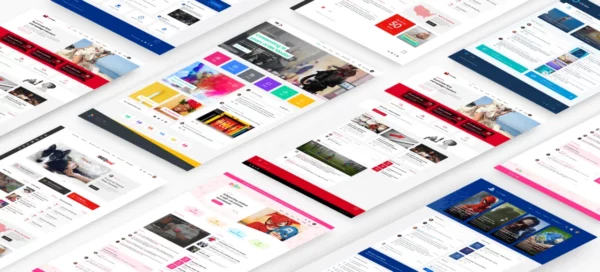Keeping staff connected in a digital age should be simple. However, when you have dispersed non-desk workers ranging from those on the shop floor to delivery drivers, warehouse workers, front-line staff, field sales reps and more, it’s a tall order.

(Photo by Anthony Ginsbrook on Unsplash)
Keeping staff connected – to information, to the tools and resources they need, to each other and to the business as a whole – is essential for keep the wheels of business running smoothly.
Your staff need to understand their organization and what it stands for. They should have all the necessary information they need to perform their roles, to remain safe and compliant, to deliver outstanding service. They need to know where – or who – to turn to for support, to share ideas and give feedback.
But when up to 75% of your staff aren’t based in an office and may not even have a corporate email account, the fail-safe methods of getting information flowing inevitably fail.
In our previous blog, we explored the reasons why we need to be engaging our front-line staff. Here, we explore how.
Are you supporting your employees?
Non-desk staff: disengaged and disconnected
The challenges facing our front-line workers are nothing new; but the cost is high. A staggering 71% of non-desk workers are not actively engaged with their business (Gallup), with a resulting impact on productivity, customer satisfaction, company overheads, and profitability.
Typically, non-desk or front-line staff have the odds stacked against them:
- Based in dispersed locations away from HQ or on the road, potentially around the globe
- Infrequent visits to a regional or head office, if at all
- Limited or no access to a computer
- No corporate accounts for email or cloud-based storage
- Unable to access vital documents or information on-the-go
- Difficulties connecting or communicating with peers from other locations; in many cases, staff may never meet or speak with colleagues outside their immediate region at all
- Lack of visibility of company news and updates in real-time; cascade of information through traditional channels such as newsletters, manager cascades, noticeboards etc. is infrequent and unengaging
Technology may have transformed the ways in which we connect and communicate, but research shows that for this demographic, it is continually failing to meet their needs. 80% of non-desk workers are underserved by technology (Emergence Capital) and 85% say the communication they receive on-the-job is not enough (StaffBase).
Step 1: Identify your non-desk workers and their needs
It may sound obvious, but the first step to connecting your non-desk workers is to define who they actually are – and then talk to them. Determine their needs, channels, and options for accessing information.
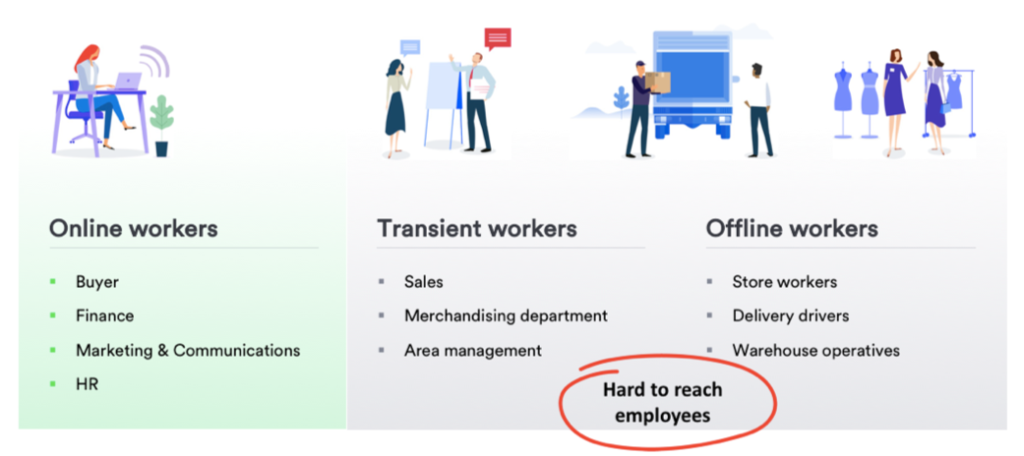
For example, you may have shop floor workers with access to a single terminal in their branch, or nursing staff with a shared computer on their ward. Field-based sales employees may have their own laptop or tablet; delivery or warehouse staff may have only their personal mobile device and glance at the depot noticeboard once a fortnight.
What do they need connecting to ? For example, shop floor workers may benefit from accessing training and best practice information, or connecting with peers to share experiences, ideation, and problem solving in order to deliver better service. Warehouse operatives may just want to access HR information or need to read health and safety updates.
With an idea of the different personas in your organization, you have the foundations to begin connecting your non-desk workers.
Step 2: Begin at the beginning: onboarding
Onboarding new staff is a critical touchpoint to get your new starters excited and engaged with their role and help them feel valued and motivated. With front-line and non-desk workers, that’s even more crucial and will help alleviate feelings of disconnect or inconsistencies.
Our onboarding checklist for remote employees covers many of the best practice ideas, but it’s worth highlighting the top winners here. Connect your non-desk workers and give a personalized, tailored onboarding experience by:
- Introducing them to senior management and the major departments or areas of your business, perhaps through internal welcome videos or presentations
- Giving a virtual office or company tour where possible; even if individuals won’t visit HQ, this is always a source of intrigue and gives an insight into the culture of your organization.
(Los Angeles-based tech company Zefr, which supports large movies and music studios to manage their content online, created this quirky video that combines an intro from its senior management with a tour of their office premises and an insight into the culture and ethos of the business.)
- Shout about your company mission and values; make them an integral part of your onboarding process and reiterate them throughout the early weeks and months (and after!)
- Set them up with the tools and information they need: even if your frontline staff won’t have their own work laptop, phone or even email account, it’s essential to provide them with an introduction and remote access to the applications they’ll need, such as payroll, HR, or your cloud storage or intranet.

(A tailored onboarding homepage on your intranet which pushes essential tools and information to new starters can facilitate a smooth onboarding process for remote employees, who can access the information on their personal mobile, tablet, or laptop.)
Are you supporting your employees?
Step 3: Go mobile
It’s time to think outside the corporate email (in)box.
Providing all your non-desk workers with a corporate email account is often an impractical and unnecessary investment; the same goes for company-owned mobile devices. However, 95% of all US and UK citizens own a personal cellphone of some kind (Pew Research Center) and as the BYOD (‘Bring your own device’) culture continues to grow, this is a practical route to connect with those on the front line.
Mobile communication can take a number of different forms;
- Mobile optimized versions of corporate intranets, websites, or applications
- Brand apps for popular tools or applications, such as OneDrive and SharePoint
- A purpose-designed intranet or enterprise app, with push notifications or alerts for essential information
- Enterprise Social Network apps, such as Slack, Microsoft Teams, Skype
- Social apps repurposed for business use, such as WhatsApp, Facebook, Twitter
- SMS or text messages
There is no silver bullet for mobile communication; factors influencing adoption and accessibility will vary according to your workforce demographic, their needs, your existing technology stack, resource, and many more.
Enterprise app development, for example, is lagging behind consumer trends, with lack of resource the most commonly-cited barrier. If you have multiple brand applications, each with a separate app – a challenge for users of the O365 suite – the chances of staff downloading multiple apps is slim. ESNs may also be valuable for point-in-time messaging, but present challenges in delivering corporate-wide, top-down communications or providing access to documents and policies.
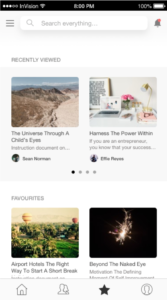
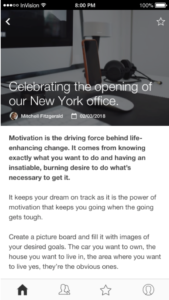
Begin with an audit of the options available, and the appropriate types of communication for each channel. For example, your corporate ESN may be an opt-in option to connect staff to their peers and gain feedback; your intranet app is the main, central connection point to the organization including policies, documents, and top-down communication, while SMS or WhatsApp are used for urgent, crisis, or timely communication.
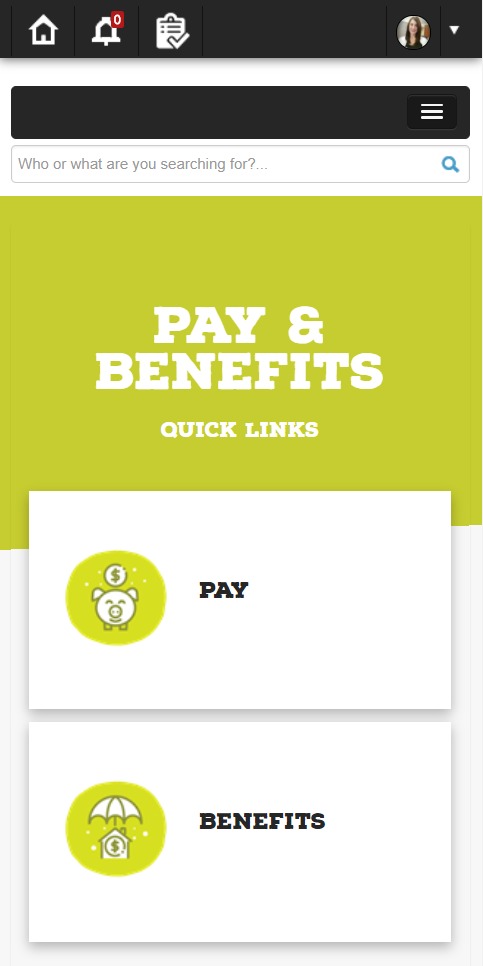
(Interact customer Sheetz took a clean and highly visual approach to designing their intranet, ensuring it was optimized for mobile in order to provide access for its dispersed staff. Icons, buttons, and a user-focused approach to navigation help increase adoption and use.)
Step 4: Make managers visible, responsive, and available
Relationships with managers have a huge impact on engagement and productivity. If workers can’t even access line managers or have no visibility of those at the top, they’ll quickly fall on the wayside.
There are some simple protocols to help overcome this barrier.
- Set up clear, open communication channels and guidelines for how and when these will be used. For example, booking in regular one-to-one catch-ups, team meetings, or having open forums for feedback, ideas, experience sharing. Don’t just keep it formal, though: use real-time messaging for those all-important ad-hoc conversations, whether that be IM, WhatsApp or good ol’ SMS. A regular ‘checking in’ process sets the expectation and reassurance that you are reachable and concerned about non-desk workers, avoiding them feeling ‘out of sight, out of mind’.
- Be transparent with your availability. Keep your calendar up to date, use status updates on your enterprise social media channels, and send a calendar invite to your staff when you’re going to be out the office, on annual leave – or in their area. Consider allocating a set time each week or month for virtual ‘open door’ event, when staff know you’re available and can approach or reach out.
- Respond to ideas, feedback, and requests: even a simple acknowledgment goes a long way to provide reassurance and ensuring staff feel listened to and valued.
- Don’t underestimate the value of face-to-face: non-verbal cues are left at the door when we rely on faceless technology such as email or instant message, losing those subtle indicators that can help clarify message and tone. This is a huge barrier to building successful relationships and may even result in misinterpretation or misunderstanding. Utilize video conferencing or facetime where possible; periodic visits in person are hugely valuable in cementing that bond further.
(Non-desk workers can face feelings of isolation and disconnect, resulting in the feeling that they’re ‘second-class citizens’ of their organization. Ensuring channels are established to provide access to managers and empower those staff with a voice can have a hugely positive impact on morale and productivity. (Photo on Unsplash)
Step 5: Make room for water cooler talk
Encouraging non-work conversation may appear counterintuitive. Admittedly, the idea of facilitating idle chit-chat about Love Island or how the Mets are faring this season may cause management to shudder, but water cooler talk has a crucial role to play.
Building bonds and relationships amongst colleagues and connecting them through shared interests is shown to improve not only employee engagement and mental well-being, but also facilitate better ideation, problem-solving, and enhanced levels of customer service. Staff are going to be more comfortable and better-equipped to seek out support and information from those they have a connection with.
The corporate attitude towards social has shifted in recent years, doing a U-turn from the ‘ban’ ethos that personified the earlier years of social media in the workplace. If staff aren’t in a position to physically stand around the water cooler, make virtual spaces and loosen the red tape to allow those bonds to flourish. The result will be more collaboration, increased productivity, improved morale, and higher levels of staff retention.
For a company to succeed, it must be able to reach out to individuals at every level. Setting up channels to connect with each other and nurturing a culture that embraces communication allows staff – wherever they are in the business – to converse, be informed and feel part of the organization as a whole.



